Moments forever
AFRICAN YOUTH PEACE SUMMIT
Each Year we hold Summit to address some of the key challenges affecting African Youths.
ABOUT THE SUMMIT
For a decade after the end of the Cold War, the world experienced a dramatic decline in the incidence and deadliness of armed conflict with particular reference to Africa. Considering the population size and jurisdiction/location, Sub Saharan Africa and the Middle East carry the largest conflict burden. Most of the violence occurs within and not between countries. Seven relationships explained the relatively high levels of internal armed conflict in Africa. Starting with poverty, Internal armed violence is more frequent in poorer than in wealthier countries. More than 1/3 of Africa’s population still lives in extreme poverty. Poverty is exacerbated by inequality and inequality on the other hand fuels violence. Also, transitions from autocracy to democracy or adverse regime changes are often prone to violence. A large democratic deficit translates into the risk of instability. In the Arab Spring countries, citizens’ demand for democracy was vast. Africa’s population is young which is an added advantage. But if young people lack opportunities, and rates of urbanization are high, the risk of conflict increases. Once the country has experienced large scale violence, the tendency towards repeat violence is strong. Being located in a conflict-ridden neighbourhood increases the risk of experiencing instability, rising global inequality and transnational terrorism. Add to the internal and regional drivers of conflict in Africa. Looking at the longer term, we also expect resource competition at a local level to trigger violence. Since 2010, violence in Africa has been on the rise. Contemporary African conflicts are increasingly fragmented, fought on a smaller scale and on the peripheries of states. More non-state actors are involved, and insurgents are often divided. The spread of transnational organized crime, including terrorism, is often linked with local politics and criminal dynamics. Low-Intensity conflict is becoming more prevalent. And since 2011, there has been a rise in social conflict, especially anti-government violence, violence related to elections has also increased. Strong democracies are generally associated with greater peace. But monetization can trigger violence in the short and medium-term. Violence at a community level increased. People compete over scarce livelihood resources such as land and water, the impact of climate change will aggravate this trend. Most conflicts include elements of support from neighbouring countries, as borders are not controlled, and rural areas are not policed. It is against this background that Firdaous Initiative for Academic Excellence (Previously Firdaous Integrated Services) decided to play a role in trying to impart knowledge to the young people on conflicts in Africa and trying to find solutions to these conflicts.
EDITIONS
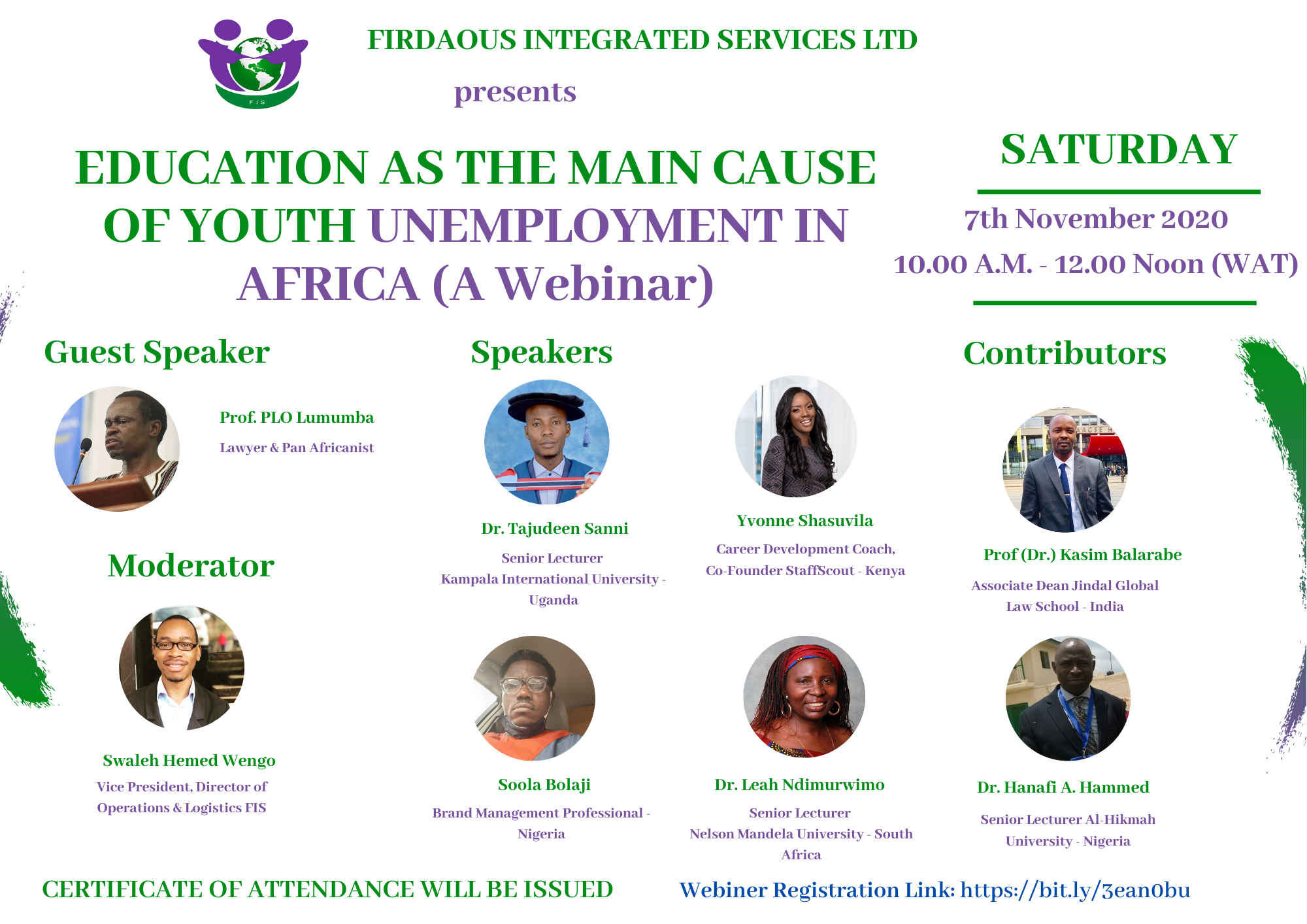
Ist Edition of the Summit
EDUCATION AS THE MAIN CAUSE OF YOUTH UNEMPLOYMENT IN AFRICA
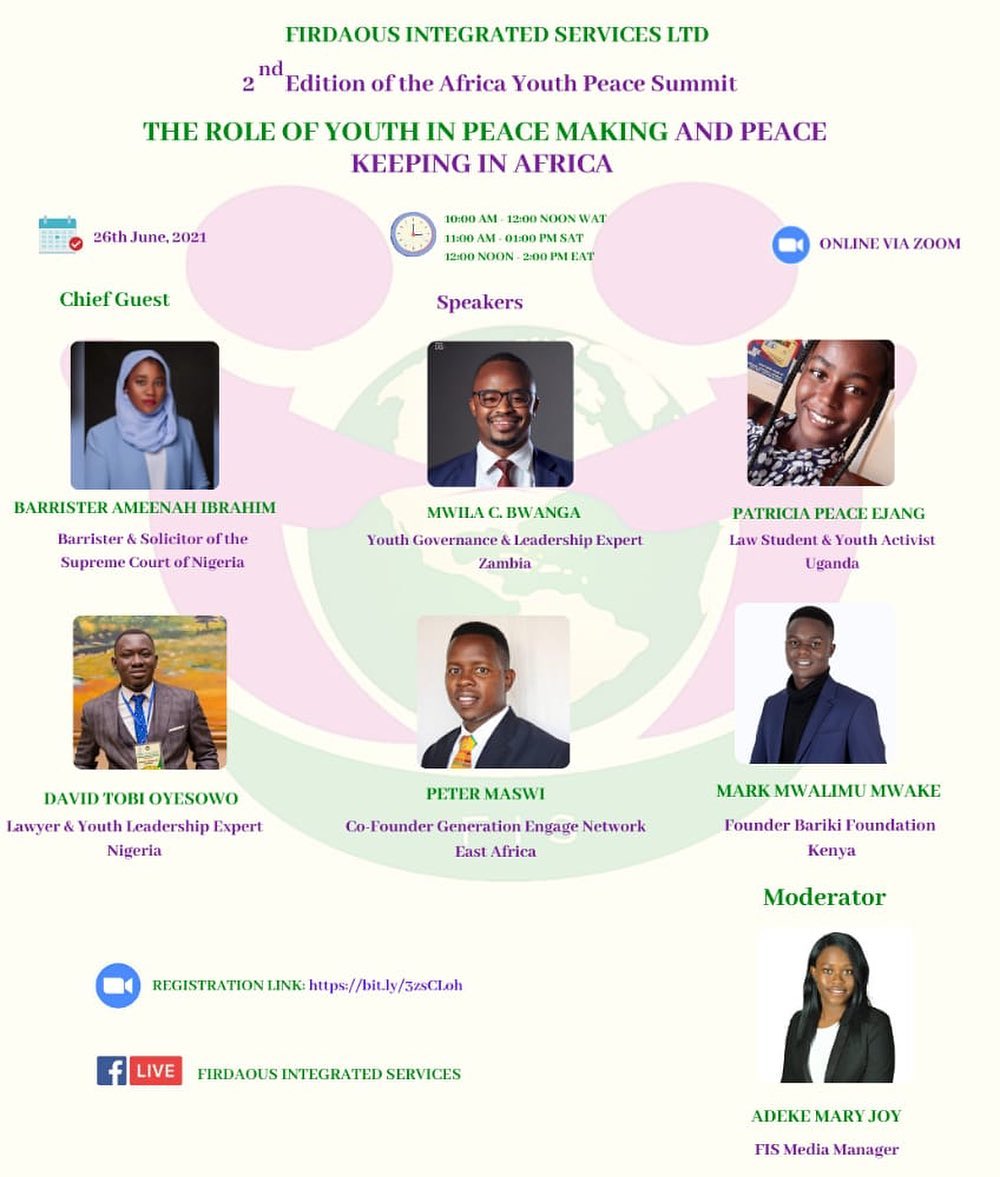
2nd Edition of the Summit
THE ROLE OF YOUTH IN PEACE MAKING AND PEACE KEEPING IN AFRICA
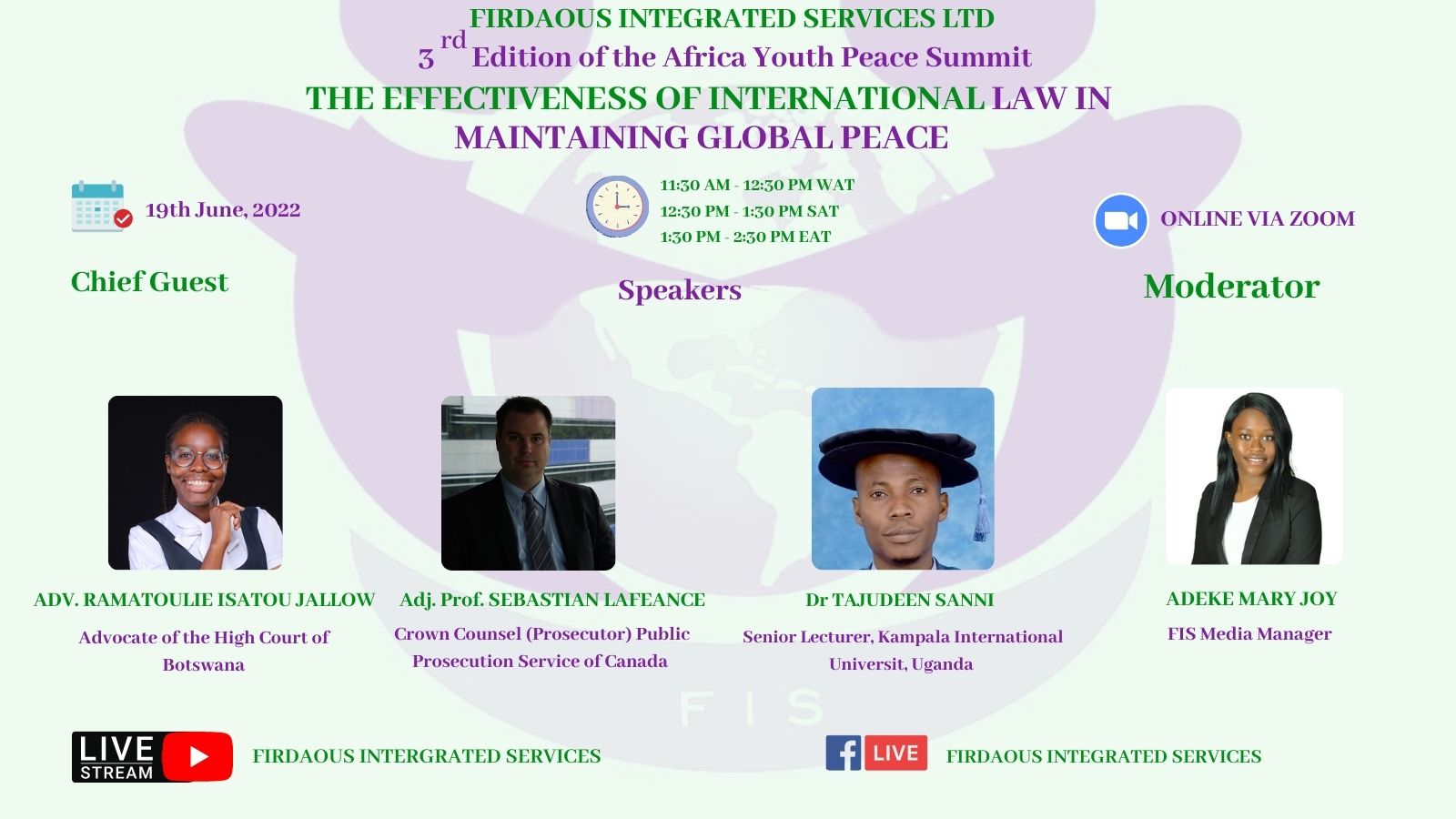
3rd Edition of the Summit
THE EFFECTIVENESS OF INTERNATIONAL LAW IN MAINTAINING GLOBAL PEACE
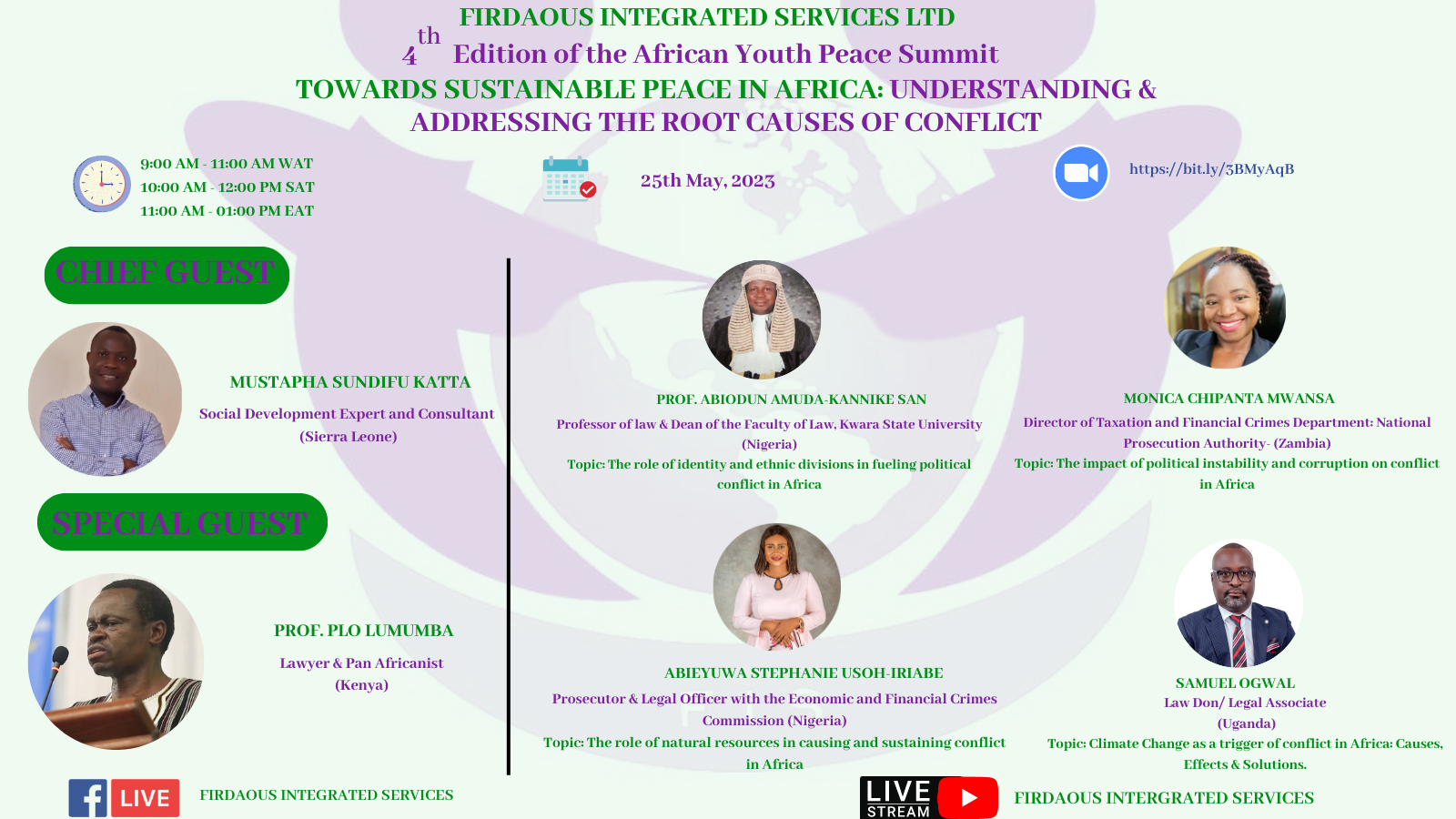
4th Edition of the Summit
TOWARDS SUSTAINABLE PEACE IN AFRICA: UNDERSTANDING & ADDRESSING THE ROOT CAUSES OF CONFLICT
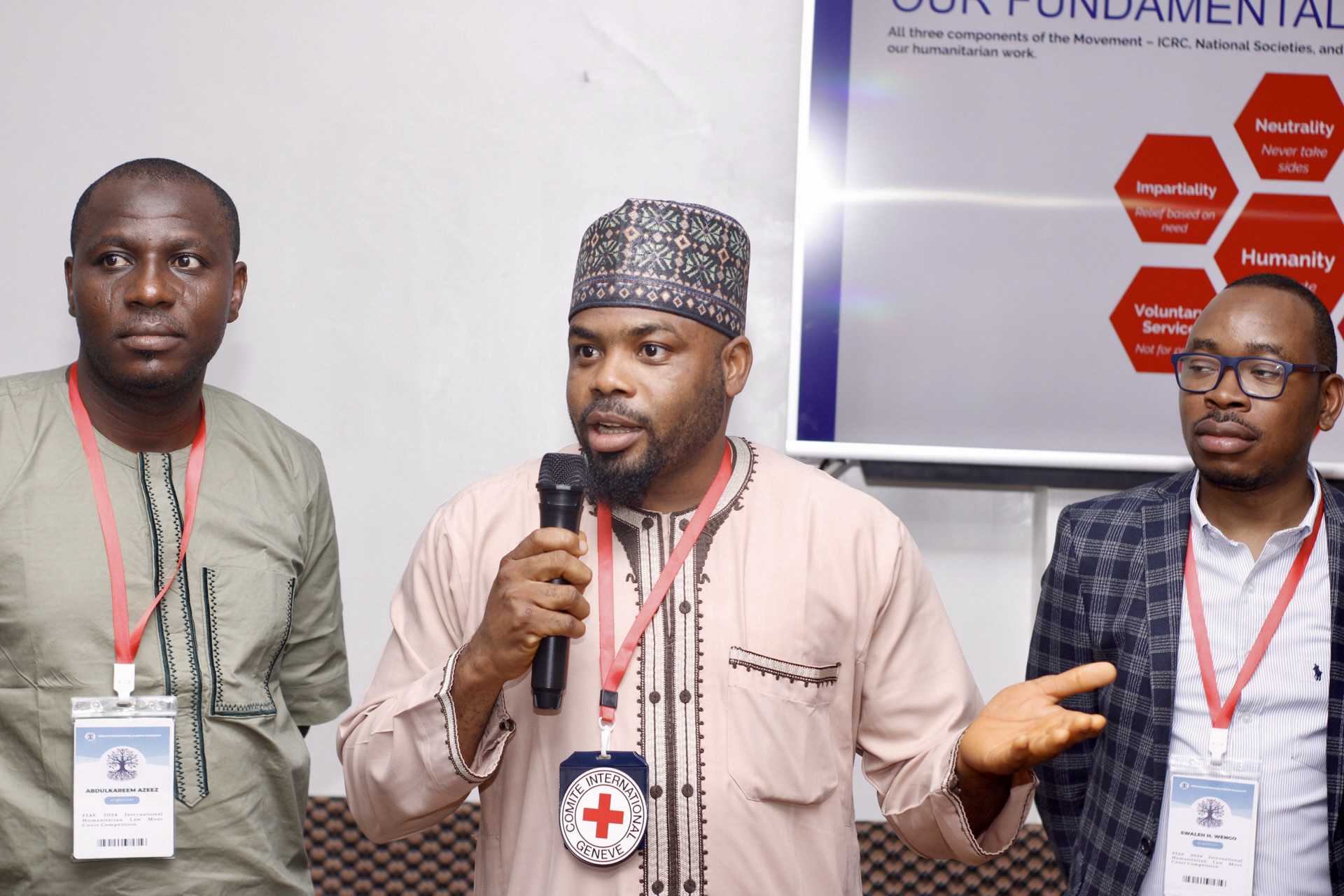
5th Edition of the Summit
UPHOLDING HUMAN RIGHTS, DEMOCRACY AND PEACE AMID UNCONSTITUTIONAL CHANGES OF GOVERNMENT IN AFRICA
